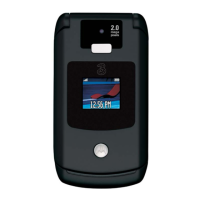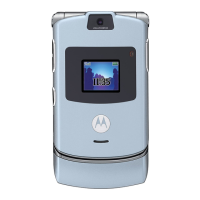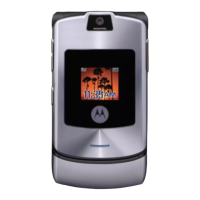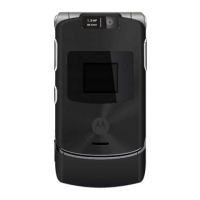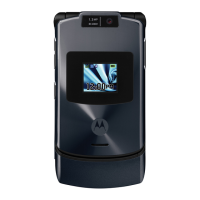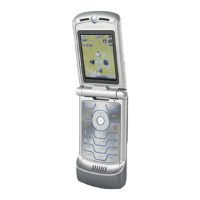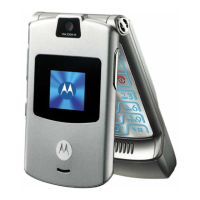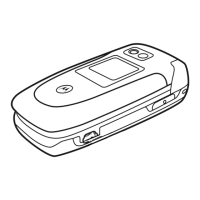





Do you have a question about the Motorola V360 and is the answer not in the manual?
| Bluetooth | Yes |
|---|---|
| Infrared data port | No |
| Ringer type | Polyphonic |
| Rear camera resolution | 640 x 480 pixels |
| Interface | mini-USB & bluetooth |
| Networking type | GSM |
| Playback formats | midi, mp3, wav |
| Operating frequency | 900/1800/1900 MHz |
| Display type | TFT |
| Display resolution | 176 x 220 pixels |
| Display number of colors | 262144 colors |
| External display resolution | 96 x 80 pixels |
| External display number of colors | Monochrome |
| Multimedia Messaging Service (MMS) | Multimedia Messaging Service (MMS) is a standard way to send messages that include multimedia content to and from a mobile phone over a cellular network |
| Product color | Blue |
| Internal memory | 5 MB |
| Data network | GPRS |
| Depth | 47 mm |
|---|---|
| Width | 90 mm |
| Height | 24 mm |
| Weight | 104 g |
Access call history: received, dialed, missed calls.
Manage contacts, phone numbers, and entries.
Access pre-installed games and phone applications.
Utilize phone utilities like calculator, datebook, alarm.
Send, receive, and manage text, email, and multimedia.
Connect to the internet and configure browser settings.
Manage audio, video, camera, and picture files.
Manage Bluetooth connections for wireless pairing.
Configure phone settings, personalization, and connectivity.
Customize phone's appearance, sounds, and display.
Set ringtone profiles, vibration, and alert sounds.
Manage network, USB, and data connection settings.
Configure options for forwarding incoming calls.
Adjust settings during an active phone call.
Configure basic phone settings like time, date, backlight.
View phone information, battery level, and storage.
Configure headset options like auto answer and voice dial.
Adjust phone settings for use in a car, e.g., auto-answer.
Manage network connections and available networks.
Set phone lock, PIN codes, passwords, and security features.
Configure settings and options for Java applications.
Explains how to navigate and use the manual's features.
Information on inserting and using the Subscriber Identity Module card.
Details on battery installation and charging procedures.
Instructions for powering the phone on and off.
Steps to initiate a phone call.
How to receive an incoming phone call.
How to view your own phone number.
Guide to capturing and sharing photos.
Instructions for recording and sending video clips.
How to use the phone's built-in audio player.
Connecting the phone to a computer via USB.
Using and managing memory cards for storage.
Enabling and using Bluetooth for wireless connectivity.
Set ringtone profiles and select alert sounds.
Modify alerts for incoming calls and events.
Synchronize or manually set the phone's time and date.
Set a photo or animation as the home screen background.
Configure a photo or animation as a screen saver.
Adjust phone skin and display brightness.
Configure how to answer incoming calls.
Silence incoming call alerts before answering.
View lists of incoming and outgoing calls.
Redial the last dialed or busy number.
Call back missed calls from the received calls list.
Access and use stored digits from the keypad.
Place active calls on hold or mute the microphone.
Manage multiple calls and switch between them.
View or hide incoming call information.
Make emergency calls, even when the phone is locked.
Make calls to international numbers.
Speed dial contacts using single key presses.
Listen to and manage voicemail messages.
Features for enhanced call management.
Detailed phonebook operations.
Managing text, multimedia, and email messages.
Customizing phone settings and appearance.
Tracking call duration and associated costs.
Using handsfree operation.
Network settings and information.
Using the phone's organizer features.
Managing phone security features.
Accessing games and entertainment features.
